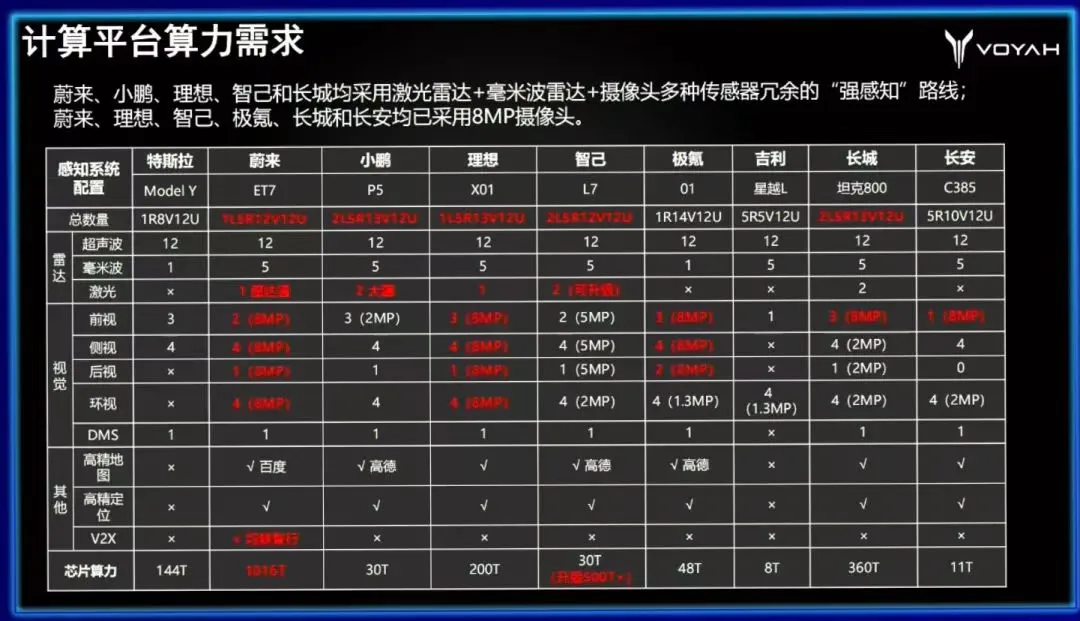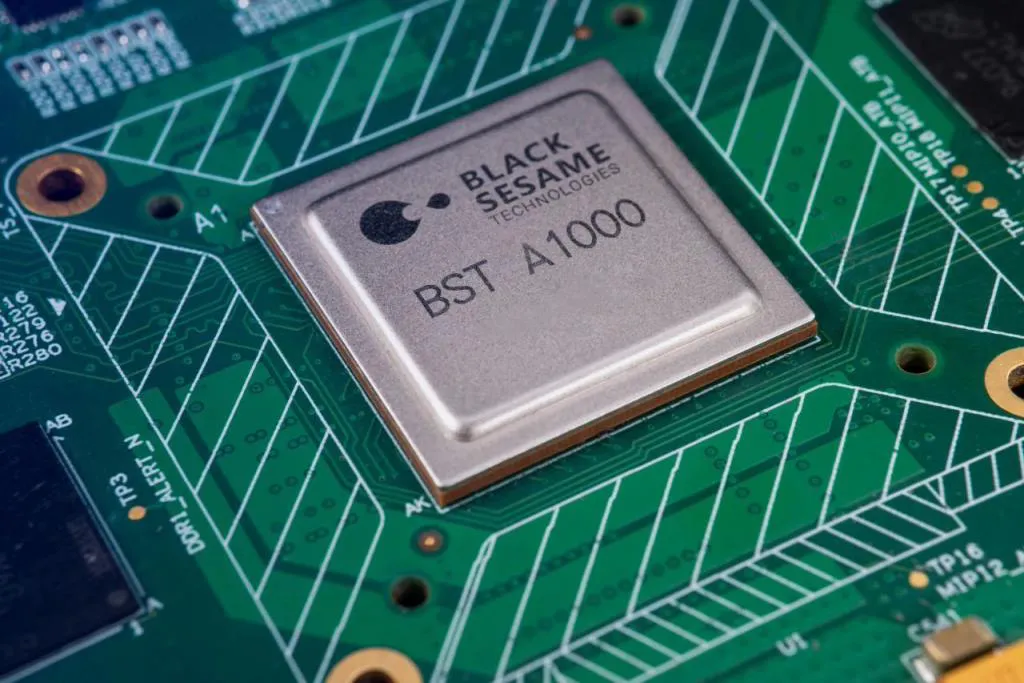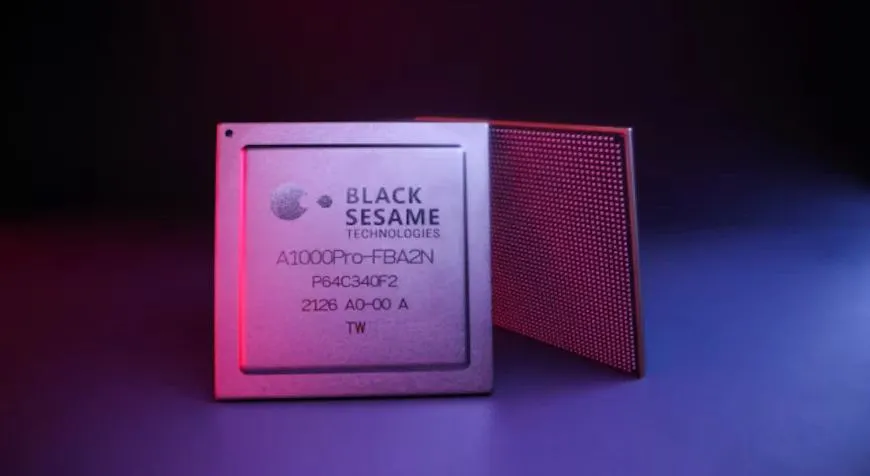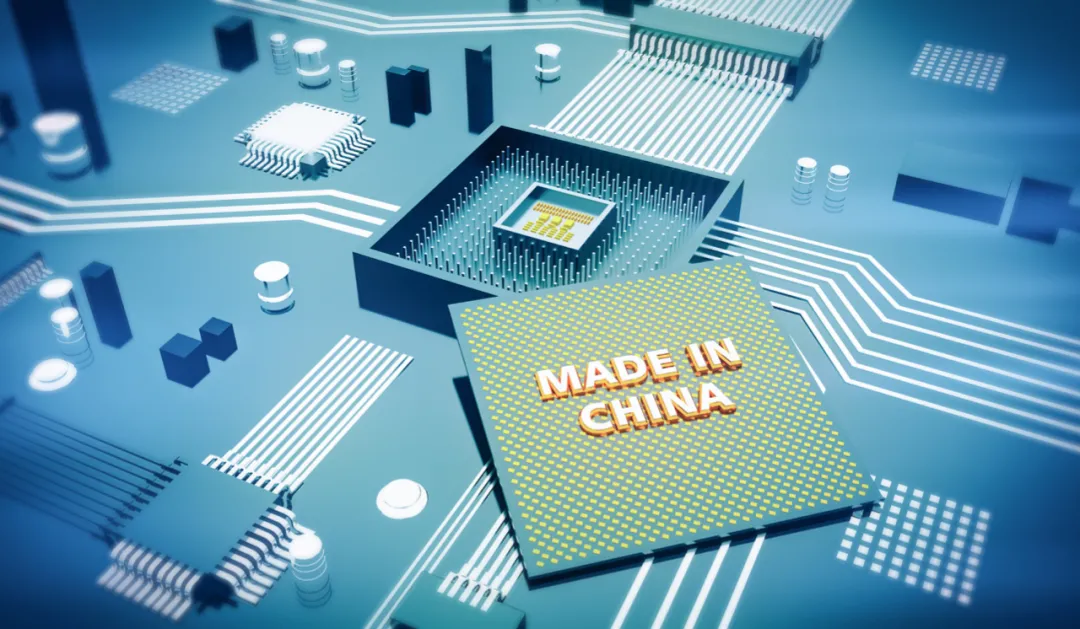About XCBR Media under the XCBR Group
Author: Zheng Wen
XCBR Media, a sub-media under XCBR Group, focuses on the evolution of the automotive industry chain.
In the field of computer science, there has been an exciting announcement recently.
The University of Science and Technology of China announced that the country’s quantum computing prototype “Jiuzhang II” has been successfully developed, taking an important step in the road to quantum computing. Barry Sanders, a quantum physicist and professor at the University of Calgary in Canada, believes this is an “exciting experimental masterpiece.”
So how powerful is this national weapon? The successful construction of the Jiuzhang II, which achieved 113 photons and 144 modes, has achieved a huge increase in computing power. It can solve Gaussian boson sampling mathematical problems 10 to 24 times faster than the world’s fastest supercomputer.
What is the concept? Billions and billions of times! The problem that “Jiuzhang II” can solve in 1ms would take the fastest supercomputer in the world 20 trillion years.
For a moment, the term “computing power” bursts with strong deterrence in front of “Jiuzhang II.”
When we retrospectively savor the term “computing power,” it has already been fully immersed in our daily lives. At this point, while you are reading this article on your phone, computing power is also in operation.
In the world of networks, high-performance PCs with higher computing power can run games with higher configuration requirements and 3D software with more memory consumption; low-performance, low-configured PCs (often) suffer from problems such as delay, frame drop, and cannot run large-scale games.
From mainframes to PCs, from smartphones to wearable devices, computing power has become an extension of human capacity. Therefore, some forward-looking people began to call out “computing power changes the world” and “computing power drives the future”. At this point, it is time for us to recognize it, face it, and learn to apply it.
The “2020 Global Computing Power Index Evaluation Report” shows that for every one percent increase in computing power, the digital economy and GDP will increase by 3.3‰ and 1.8‰, respectively. China’s GDP exceeded 100 trillion yuan in 2020, and 1.8‰ is roughly equivalent to 180 billion yuan.
In February of last year, Huawei released a report entitled “Ubiquitous Computing Power: The Foundation of the Intelligent Society,” which estimated that China’s per capita computing power is currently around 553 GFLOPS (Giga Floating-point Operations Per Second, the number of floating-point calculations performed per second), while the per capita computing power in the mature stage of social intelligence needs to reach over 29,000 GFLOPS. This means that China’s computing power needs to at least increase by 52 times.## “Computing Power Arms Race” Gunshots Ring Out
It is not difficult to understand why some people hold high the banner of “computing power is productivity” in many classic application innovation scenarios where there is a strong demand for computing power. One data intuitively reflects the embarrassment of computing power in scenario applications. According to OpenAI research, the computing power demand for artificial intelligence model training has increased by more than 300,000 times in six years from 2012 to 2018, but chip computing power has only increased by 7 times during the same period according to Moore’s Law.
In the automotive industry, with the development of intelligence, it has also entered a period of scarcity of chip computing power. Similarly, it has become an important factor restricting the development of intelligent vehicles.
“The future of intelligent driving is decided by chips.”
Yang Yuxin, CMO of Black Sesame Intelligent Technology, said at the Third Global New Energy and Intelligent Automobile Supply Chain Innovation Conference that “the development of all electronic industries starts with hardware because chips determine the boundaries of the entire autonomous driving performance and functions. If something cannot be supported by hardware, the software cannot be realized. This is a technical law.”
The automotive architecture has changed from a distributed model to a centralized one, leading to a demand for higher integration of SoC chips. The car computing chips can be divided into MCU and SoC chips. Traditional distributed architecture of the car uses ECU algorithms, and each function is independent from the others, so the required computing power can be satisfied by MCU chips.
However, with the trend of automotive intelligence, centralized control is becoming the trend. Enterprises in the industry chain are developing towards domain control and centralized control. The domain controller integrates many ECU operation processors, which greatly increases the demand for chip computing power and requires coordination among various control parts in the domain, thus generating corresponding demand for SoC chips.
Compared with MCU chips that mainly rely on CPU calculations, SoC chips generally integrate CPU, image processing GPU, audio processing DSP, deep learning acceleration unit NPU + memory + various I/O interfaces, with more powerful functions. They are currently mainly used in the fields of intelligent cockpit and autonomous driving. However, the reality is that the computing power of many current computing platforms is still inferior to that of an iPhone 7. A truly autonomous driving car requires computing power exceeding that of more than 500 iPhone 7 devices.
Take the intelligent cockpit as an example.
 The intelligent connected vehicle is rapidly evolving. In 2015, only 4.6% of new vehicles were equipped with intelligent connected technology. However, by 2020, this number had risen sharply to 48.8%. Despite this high adoption rate, consumers often experience poor user experiences. According to data from a related automotive research organization, 56.5% of users complain about slow response time from the center control screen, and 50.95% of users experience a lagging response system. These deeply rooted user problems are due to insufficient computing power.
The intelligent connected vehicle is rapidly evolving. In 2015, only 4.6% of new vehicles were equipped with intelligent connected technology. However, by 2020, this number had risen sharply to 48.8%. Despite this high adoption rate, consumers often experience poor user experiences. According to data from a related automotive research organization, 56.5% of users complain about slow response time from the center control screen, and 50.95% of users experience a lagging response system. These deeply rooted user problems are due to insufficient computing power.
The demand for computing power from the computing platform is largely dependent upon the significant advancements in perception systems, including the incorporation of lidar and 8 million pixel cameras. The implementation of complex systems or SOA architectures also requires higher computing power.
“As the level of autonomous driving increases, the computing power required increases exponentially. Generally speaking, L2 requires less than 10 TOPS of computing power, L3 requires between 30 and 40 TOPS, L4 requires over 100 TOPS, and the industry has not yet defined the computing power required for L5,” stated Liu Huikai, the director of autonomous driving algorithm research and development at Landtour Automotive Technology Co. Ltd, during the Gaishi auto domain controller forum. Currently, the computing power of the computing platform can only support the development needs of some L3 and L4 systems.
NVIDIA’s predictions also demonstrate the importance of computing power, as L4 autonomous driving vehicles require approximately 50 times more computing power than can be achieved through algorithm optimization alone, and L5 autonomous driving vehicles require approximately 10 times more computing power than L4.
As the industry rapidly develops, computing power is becoming as important a criterion for evaluating a car as horsepower. In 2019, when Tesla introduced the HW3.0 chip, the 144 TOPS of computing power caused quite a stir in the industry, sparking a competition in computing power for SOC chips.
The two commonly used units for measuring computing power are TOPS (Tera Operations Per Second), with 1 TOPS representing 10^12 operations per second, and FLOPS (Floating-point Operations Per Second), representing the number of floating-point operations per second. When using FLOPS, a letter constant is used in front of it, such as TFLOPS and PFLOPS, with T and P representing the number of times. TFLOPS represents 1 trillion operations per second, while PFLOPS represents 10 quadrillion operations per second.
From a global competitive perspective, traditional chip makers and technology giants dominate the market for high-end SoC chips for vehicles.# The Entry of Intel and Nvidia into the Automotive SoC Market
Intel has entered the automotive system-on-chip (SoC) market through the acquisition of Mobileye, while Nvidia, the global leader in graphics processing units (GPU) with a market share of over 70%, has been continuously promoting its products in the application of intelligent cockpit and autonomous driving based on its advantages in GPU. Tesla is also increasing its layout in the field of intelligent driving, enriching and enhancing its FSD function.
The large-computing automotive-grade intelligent driving chips that have been launched mainly include Tesla FSD, Nvidia Orin, and Mobileye Eye Q4. Nvidia will launch a 1000TOPS SoC in 2024… The development of powerful computing autonomous driving dedicated chips is becoming a new battleground for chip giants.
New Era Heroes
As competition gradually advances to high-end autonomous driving, domestic chip companies need to use stronger chip strength to engage in frontal wars with old chip giants such as Nvidia and Qualcomm.
As a leader in domestic technology, Huawei empowers automakers with core components and solutions in the field of autonomous driving systems. Currently, its vehicle-mounted SoC mainly includes Ascend 310 and Ascend 910 chips. More importantly, in this field, many outstanding domestic enterprises have also emerged.
For example, Sesame Technology and Horizon, which respectively launched chips A1000 and Journey 5 to meet current mainstream computing power requirements, have even released high-performance large computing chips for the next generation, such as the A1000 Pro released by Sesame Technology. Whether it is Sesame Technology, Horizon’s takeoff, or Cambricon’s leap, breaking through the blockade line of chip giants such as Nvidia and Qualcomm has a crucial significance.
As a domestic manufacturer of automotive-grade chips, the strength of Sesame Technology cannot be underestimated and is also a unicorn worth mentioning. Why? Sesame Technology’s layout in this field is relatively advanced. Globally, besides international supplier Nvidia, the other company that can provide high-standard chips is Sesame Technology.
As a young company founded in 2016, Sesame Technology initially positioned itself as a high-tech research company focused on the development of large computing autonomous driving computing chips and platforms.
This positioning is very forward-looking.According to a report by iResearch, advanced driver assistance systems (ADAS) will be the fastest-growing field in automotive semiconductors in the future, among which AI chips (SoC chips) will play a crucial role. According to data from Global Market Insights, the market size of AI chips for vehicle use is expected to grow to $12 billion by 2026.
Since its establishment, Black Sesame Technologies has insisted on developing core IP, deepening the three major fields of artificial intelligence, vehicle-grade chips, and autonomous driving, and currently has a relatively complete technical system of products.
In August 2019, Black Sesame released its first vehicle-grade intelligent driving chip, Huashan 1A500, with a computing power of 10 TOPS. After the release of the first-generation chip, Black Sesame’s progress was very rapid.
In June last year, Huashan 2A1000 was released, with a computing power of up to 116 TOPS and support for level 3 autonomous driving systems. The power consumption of A1000 is about 8 watts. It is worth mentioning that while the computing power is close to that of Tesla, the power consumption has been reduced by more than half.
In the following month, A1000 obtained the ASIL B certification of the ISO 26262 functional safety product, which was the first domestically produced automatic driving calculation chip to pass the safety certification.
In industry standards, ASIL levels define the requirements for system safety, which are divided into four levels: A, B, C, and D, with the severity increasing in order. The higher the ASIL level, the higher the requirements for the safety of the system, which also means that the higher the level, the more complex the system design, the longer the development cycle, and the higher the development cost.
This year, Black Sesame’s computing power has been upgraded again, releasing Huashan 2 A1000 Pro, which has a maximum computing power of 196 TOPS. It is one of the highest computing power and performance vehicle-grade chips in China.
A1000 Pro is designed and optimized based on the previous generation A1000 core, using innovative advanced packaging technology in the industry to integrate multiple cores, solving the problem of supporting ultra-large-scale deep learning engines under the 16nm process, and pioneering automatic driving chips. The built-in high-performance GPU can support high-definition 360-degree 3D panoramic image rendering, covering L3/L4 advanced autonomous driving functions.
Currently, A1000 Pro has been announced to have successfully completed wafer production, and is expected to achieve mass production and market launch of vehicle models at the earliest by the end of 2022. A1000 Pro also meets the ISO 26262 functional safety product certification, directly reaching ASIL D level.


In the introduction of the chip above, besides involving a large amount of calculation power, there are two key pieces of information: regulatory standards and performance. The regulatory standard has already been explained, and the performance needs to be highlighted.
For autonomous driving chips, it is not only about calculation power but also about energy efficiency ratio, which is an important evaluation indicator. High energy efficiency ratio can not only save a lot of electricity for cars but also generate less heat, which helps the chip module to dissipate heat and operate with high performance and stability. In other words, chips with high energy efficiency ratio can have more potential for extreme calculation power.
It is the core calculation power that Yang Yuxin refers to, “Regarding the core calculation power of the chip, it does not refer to TOPS calculation power, but to the CPU calculation power of the chip. TOPS is used for deep neural network acceleration. The calculation of GPU will test the overall computing ability of a chip and how to provide strong performance to cars in the field of terminal with the highest performance demand.”
The chip performance of Heizhima is outstanding. A single A1000 chip is suitable for L2+ autonomous driving, and dual A1000 chips support L3 autonomous driving with an algorithmic power of 140TOPS. Four A1000 chips can support L4 autonomous driving or above.
The reason for ensuring high calculation power and high energy efficiency comes from the two core IPs independently developed by Heizhima Intelligent: NeuralIQ ISP image signal processor and Deep Neural Network algorithm platform DynamAI NN engine. Yang Yuxin vividly introduced, “NeuralIQ ISP image signal processor can make cars ‘see clearly’, and DynamAI NN engine can make cars ‘understand’.”
Yang Yuxin is a rational optimist who believes that the Chinese regulatory level chip industry is still in its early stages of development. The challenges faced by Heizhima Intelligent are to continuously break through technological bottlenecks and enhance product safety and reliability. However, he still believes that the road of domestication of autonomous driving regulatory level chips is full of promise and hope.

There are still many people like Yang Yuxin who work hard for domestically produced high calculation power chips with high hopes. “NVIDIA is not the rule maker. What it has is everyone’s inertia around the use of CUDA.” Suiyuan Technology CEO Zhao Lidong has been calling for “being bold and striving for the highest-end chips in entrepreneurship!”黑芝麻等诸多初创公司的努力和冒险对国产芯片的发展至关重要,这是一个全新时代的产物,也需要新的英雄崛起。中央领导人指出,新时代需要新的英雄,并且一定会因此而崛起新的英雄。在推进芯片技术方面,这些公司将成为新时代的英雄。
This article is a translation by ChatGPT of a Chinese report from 42HOW. If you have any questions about it, please email bd@42how.com.